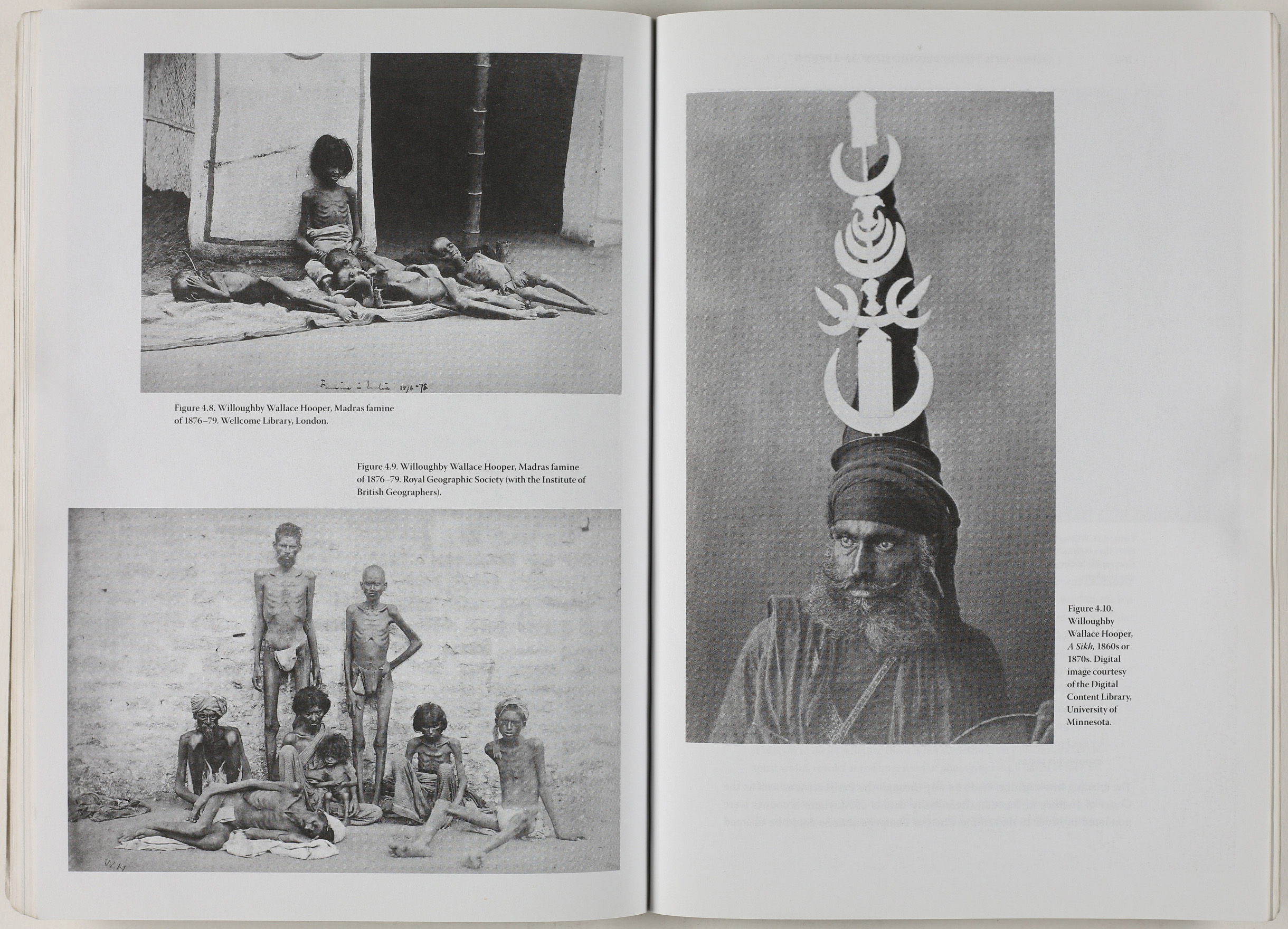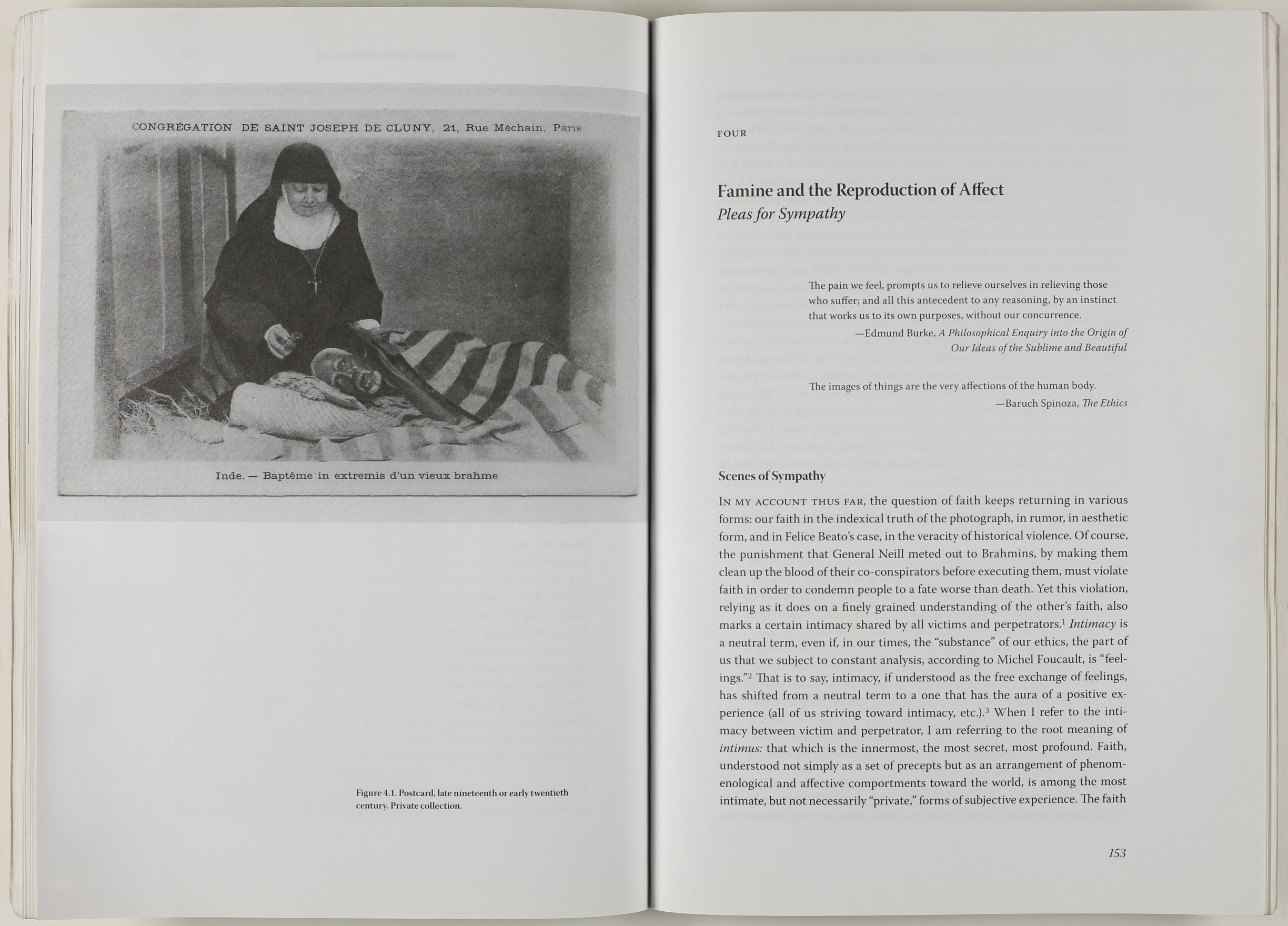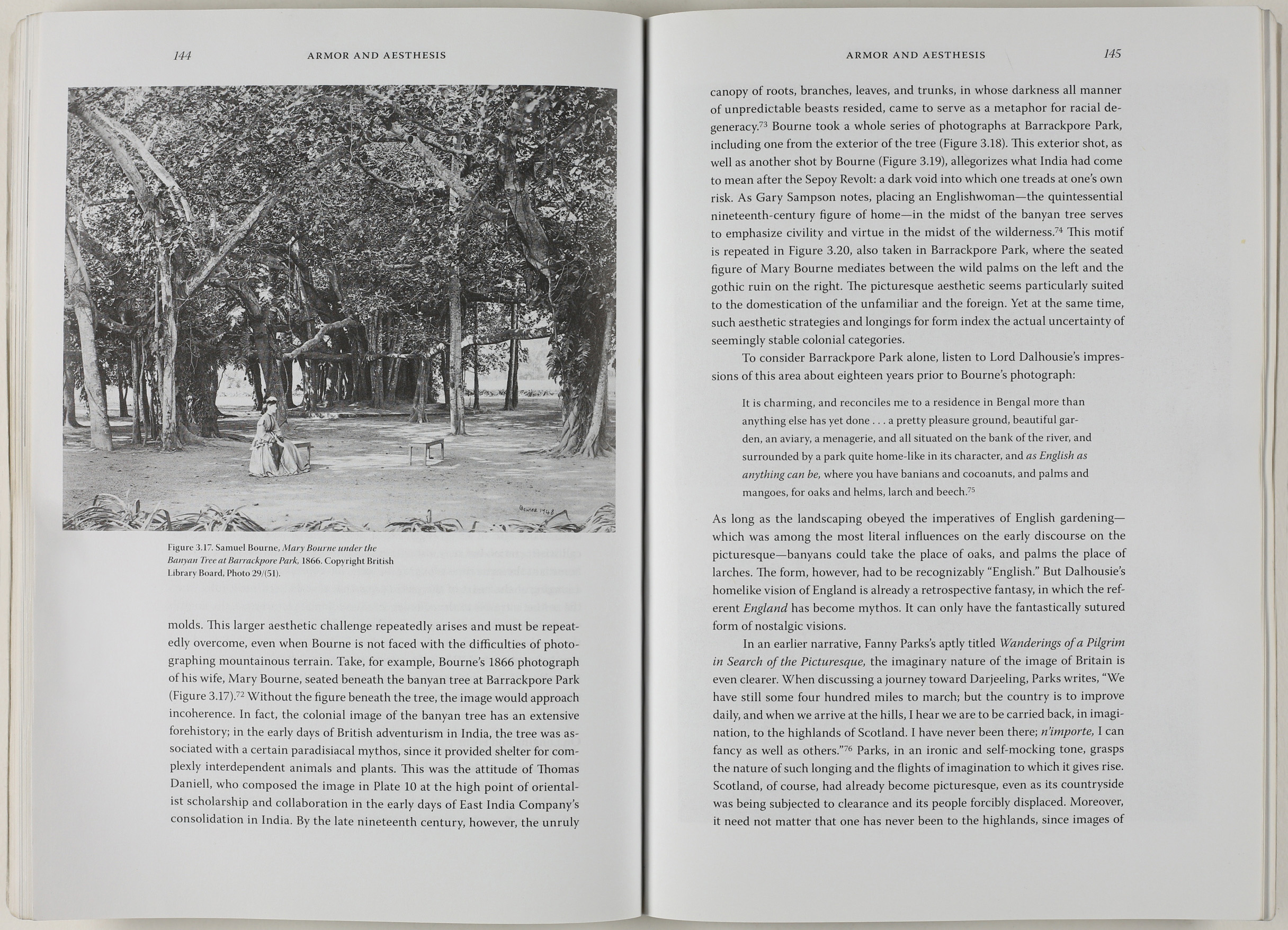Afterimage of Empire – Part 2
Postcard, late 19th-early 20th century featured in the book. Private Collection
Familiarity, dissonance, passivity and then re-engagement are the shifting fault lines around how 19th century histories can trigger the combined sensibilities of affect and memory, but as Prof. Chaudhary suggests in this interview, a certain confrontation with historicity can be productive given the plethora of interpretations that lie within colonial discourse – however the need to absorb history itself is unquestionable. In a similar way, though the photographs that he researches were taken in the 19th century, artistic interventions became integral to their afterlife. In order to be viewed by the public in news media for some time, they were drafted as drawings and engravings given printing processes were yet to develop reproducible halftone images for mass dissemination.
I am fascinated by ‘affect’ – and the chapter of sympathy is about that – how sympathy misfires, and how you’re feeling most sympathy when you’re wanting to replicate what you already know…
In order to engage with the complexities of histories and their visual accomplices – and by selecting images which explore a kind of ephemerality – the publication highlights rooted, and at times, expanded connectivities between images and biographies – those emerging from the very height of empire which are no longer contained by imperial contexts alone. Famine photographs, or of those isolated European figures in the Indian landscape – need to dialogue in the present, and they are ‘contemporary’ by virtue of their ability to negotiate and network between then and now.
The realm of the personal, deeply subjective and meticulously self-scrutinised world in which images also circulate is explored here too – through testimony and evidence – but the question remains: can they engineer or invoke an alternative reading of the past? Afterimage then is a moment at which the past is re-ignited or ‘re-activated’ as Zahid proposes; it is not only to be collated, and inventoried but is a dynamic instant that can be immensely self-reflexive; as it holds the key to its own relay and critique. The very anchoring of images as ‘fact’ can be unhinged by viewing them as strains of pain, suffering and sympathy – as auto-biographies and a kind of mirroring through which we can interrogate the legitimacy of our own positions.
The publication then poses serious questions around visual affiliation – where one is situated and whether location and gaze are the only reference points through which we negotiate our equations with culture and politics. By engaging with critical traditions around interdisciplinary area studies – English, Art History, Anthropology and Media Studies – the publication then envisions an audience in tune with cultural debates, thereby broadening the possibilities. The book is then also a meditation around the practice of photography as a mode of self-expression, observation and debate-making through which social transformation can be anticipated.
(With regard to the famine images) There’s a whole genealogy of liberalism and liberal rationality that I don’t engage with…


 Spreads of Afterimage of Empire with famine images by W. Hooper
Spreads of Afterimage of Empire with famine images by W. Hooper

The ‘afterimage’ through the Frankfurt School, Marxist tradition, particularly in (Walter) Benjamin – is also a moment of a possible reactivation of a former historical hope or a historical catastrophe…
 Spread of Afterimage of Empire with image by Deen Dayal
Spread of Afterimage of Empire with image by Deen Dayal
 Spread of Afterimage of Empire with image by Samuel Bourne
Spread of Afterimage of Empire with image by Samuel Bourne

Ph.D. Cornell University. Zahid R. Chaudhary specializes in postcolonial studies, visual culture, and critical theory. Afterimage of Empire: Photography in Nineteenth-Century India is his first book.
His current book project, Impunity: Notes on a Global Tendency, analyzes juridical, economic, political, and aesthetic aspects of the practices of impunity from the Cold War to the present, from postcolonial states to the United States. The book considers documentary film, contemporary art, development projects, and architecture. He has also published articles in differences, Cultural Critique, South Asia, and Camera Obscura. Some of his course titles include Difficult Art, Bollywood Cinema, Psychoanalysis and Postcolonialism (grad), Mimesis (grad) Introduction to Theory, Reading Literature: Fiction, Urban Fictions, Magical Realism, and Violence and the Modern.